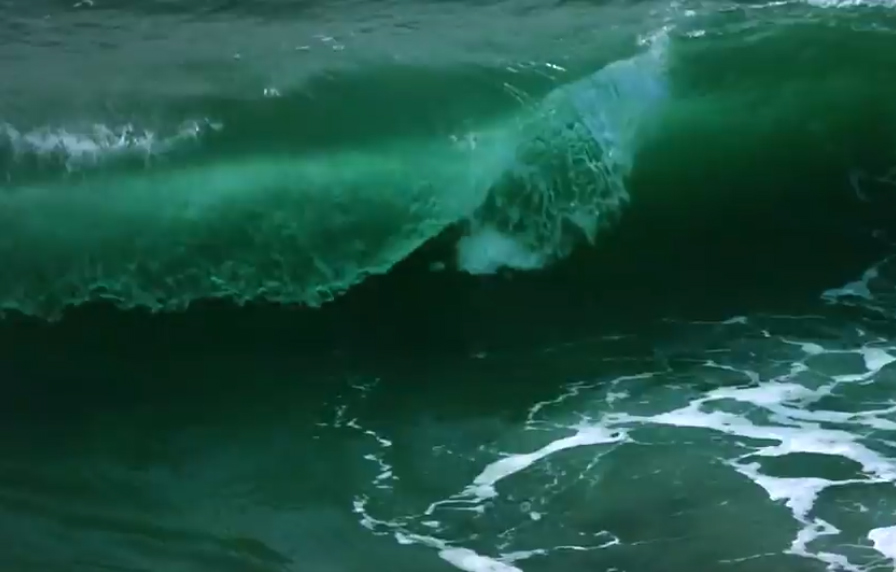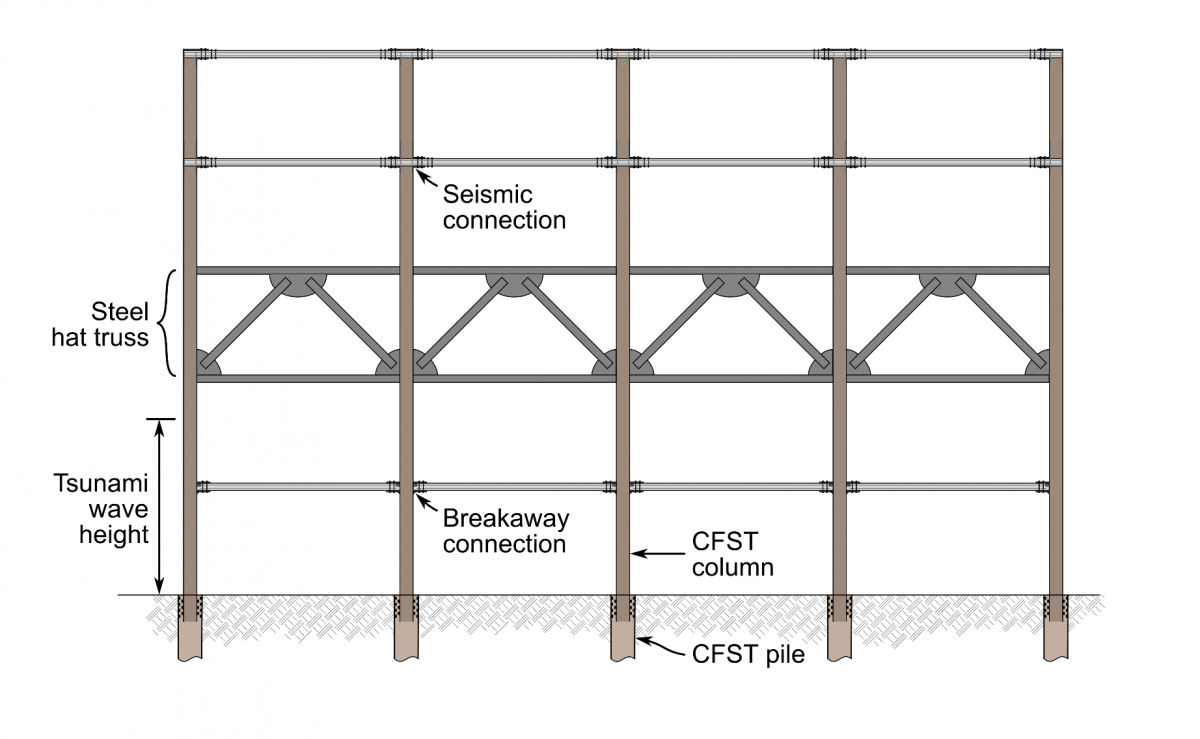October 19, 2017
 |
 |
 |
 |
| Dawn Lehman | Michael Motley | Charles Roeder | Pedro Arduino |
The best designs can also be the most surprising. A promising new concept for tsunami resistant buildings features breakaway walls and floors on lower levels that, when removed by forceful waves, strengthen the structure and better protect occupants seeking safety on higher floors.
Thanks to a $1 million National Science Foundation Civil, Mechanical and Manufacturing Innovation grant, CEE faculty will be developing a new structural system to better protect communities during tsunamis. The research project, Vertical Evacuation Structures Subjected to Sequential Earthquake and Tsunami Loadings, will be led by professor and principal investigator Dawn Lehman and co-investigators Michael Motley, Charles Roeder and Pedro Arduino. The researchers bring together expertise in structural earthquake engineering, tsunami engineering and geotechnical earthquake engineering.
 Tsunami waves. Photo credit: NSF.
Tsunami waves. Photo credit: NSF.
The research is timely, with a major subduction zone earthquake predicted for the Pacific Northwest. An earthquake of this magnitude could trigger a tsunami, which would hit coastal communities the hardest.
“There isn’t higher ground in the Pacific Northwest like there is in Hawaii, so we must provide safety for communities during a tsunami,” Lehman said. “Vertical evacuation structures are expected to provide public safety in these regions, but the structural design and tsunami loadings are unstudied. This project will provide fundamental and first-of-its-kind data for the engineering of these important structures.”
In addition to withstanding earthquakes, tsunami-resistant structures have the added challenge of sustaining demands resulting from powerful waves, which can result in forces that are up to five times greater than those sustained during an earthquake.
The researchers will develop an entirely new structural system that includes two novel features: breakaway walls and floors as well as a new concrete-filled steel tube (CFST) frame system.
Although the concept may seem counterintuitive, allowing lower floor slabs to breakaway actually reduces forces on the structure, thereby enhancing resiliency. The breakaway feature also reduces the demands on the foundation and soil, which helps prevent the building from uplifting from the ground.
 A new tsunami resistant structural design features concrete-filled steel tubes to help anchor the structure to the ground and breakaway walls and floors to reduce overall forces.
A new tsunami resistant structural design features concrete-filled steel tubes to help anchor the structure to the ground and breakaway walls and floors to reduce overall forces.
To anchor the building against powerful waves, CFST columns will be directly connected to the CFST piles. CFST are stiffer and stronger than comparable concrete piles that are more commonly used in building foundations.
To inform their research, the researchers will investigate the physical interaction of tsunamis using a NSF-sponsored large-scale wave tank at Oregon State University that can simulate a range of tsunami waves. The results will inform computer-based numerical simulation of the building, soil and tsunami loads. The findings will ultimately be implemented in building design codes for use by public agencies and engineers.
The NSF award number is 1726326.